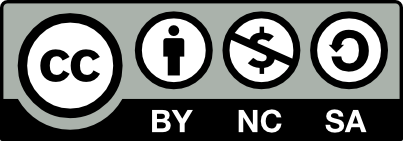Persona Vol. 2 Núm. 3 (2017)
URI permanente para esta colección
También puede consultarse en el Portal de Revistas UCALP (https://revistas.ucalp.edu.ar/index.php/persona/issue/view/17)
Examinar
Envíos recientes
- PublicaciónAcceso AbiertoLa educación, en clave católica(Universidad Católica de La Plata. Facultad de Humanidades, 2017-06-14) Dondi, JorgeEl autor de esta obra, actual Arzobispo de La Plata y de buena pluma, nos ofrece una serie orgánica de reflexiones, meditaciones y propuestas en torno a la naturaleza y misión de la escuela católica, institución que se ordena a sus-citar un humanismo en el que se armonizan las verdades de la fe cristiana con las de la razón humana.
- PublicaciónAcceso AbiertoLa mujer según Edith Stein(Universidad Católica de La Plata. Facultad de Humanidades, 2017-06-14) Fernández, Angélica BeatrizEntre 1928 y 1933, dio una serie de grandes conferencias sobre la mujer, presentando una imagen de ella que resultaba revolucionaria para la época. Estaba convencida de que la solución de los problemas del mundo requería que a la mujer se le ayudara a madurar humana y espiritualmente. Exhortaba a favorecer una educación basada en valores tanto para hombres como para mujeres, dado que la construcción de la sociedad compete a ambos y deben realizarla en conjunto. Insistió en la necesidad de eliminar la discriminación de la mujer en la educación y de superar el intelectualismo masculino agregando a la educación la moral, la formación de las virtudes, voluntad, sentimientos y afectos; porque, para ella, la persona madura es aquella que ha integrado todas sus facultades. Continuó afirmando que la mujer debe ejercer todas las profesiones y entrar plenamente en el mundo laboral porque tiene la misión de humanizar este mundo recordando a todos que una persona humana vale más que todas las cosas; y que cualquier profesión, cualquier vocación, cualquier labor están al servicio del ser humano. El tema de la mujer, la reivindicación de los derechos y su integración dentro del ámbito de la sociedad es un hecho que sigue teniendo gran actualidad.
- PublicaciónAcceso AbiertoLa teoría de la ley en la teoría del derecho de Carlos Octavio Bunge(Universidad Católica de La Plata. Facultad de Humanidades, 2017-06-14) Bazán Lazcano, MarceloLe ley es una especie de “derecho positivo” consistente en su escritura por “una autoridad pública”. La creación de la ley jurídica es simultánea a la creación del Es-tado y anterior a la “ley natural”. En cuanto a sus “partes”, son “dos ideas funda-mentales: el orden social y la fuerza”. El derecho alcanza su plenitud con ella. Las dos ideas fundamentales conciernen al fin, que es la paz, y a la coacción, que es el medio, respectivamente. Ahora bien, entendiendo la “disposición” en que consiste la primera parte de la ley como “fin”, está clarísimo que lo que se pretende al contemplar la “sanción” como un medio para su obtención no representa otra cosa que el concepto necesario para la formulación de la proposición en que consiste la minor. Evidentemente, no se pretende que la ley misma sea un silogismo práctico. Pero entonces, ¿qué se quiere decir al afirmar que ella tiene dos partes, de la que una es el fin y la otra el medio? El siguiente punto al que se refiere Bunge en el mismo apartado concerniente a la “ley” [...] es el término “caracteres”, que en realidad se refiere a sus tres principales atributos, cuando se la califica como “compulsiva, general y estable”. Otra clasificación que se menciona en este apartado es la que distingue a la ley por “sus efectos, su objeto y su duración”. Después de ocuparse del problema de la ley en su aspecto interpretativo, el autor trata de los principios de irretroactividad y retroactividad de la ley, concluyendo que el segundo procede de la ley o de lo dispuesto por el “legislador”.
- PublicaciónAcceso AbiertoDetección de dificultades asociadas al riesgo académico en alumnos del primer ciclo de la carrera de odontología (UCALP)(Universidad Católica de La Plata. Facultad de Humanidades, 2017-06-14) Valerga, María Teresa; Anselmino, Cristina ELa Facultad de Odontología (UCALP) desarrolla desde 2013 un plan de acción tutorial en el primer ciclo de la carrera para favorecer la integración a la vida universitaria, previniendo el riesgo de reprobación, abandono o rezago. Alumnos con riesgo académico o en situación de vulnerabilidad manifestada por reprobación, ausentismo o falta de integración fueron derivados al Departamento de Orientación Educativa para realizar su seguimiento. Se identificaron las dificultades presentadas por dichos alumnos y su relación con la permanencia o el abandono de la carrera. La dificultad más frecuente fue la adaptación a la vida universitaria combinada o no con dificultades en los métodos de estudio, seguida por aquellas de orden vocacional. Coincidimos con otros autores en que el ingreso a la Universidad implica el pasaje de una cultura a otra, y que el oficio de estudiante se aprende con la experiencia académica; pero existen otras dificultades que exceden a esta transición.
- PublicaciónAcceso AbiertoContemplata contemplantis vita(Universidad Católica de La Plata. Facultad de Humanidades, 2017-06-14) Delgado, Luis HoracioEl siguiente trabajo quiere reflejar un exquisito acervo propiamente medieval. Este consiste en la conservación, unificada en la persona y unificadora, de los distintos ámbitos existenciales de la vida, por el ejercicio intelectual del logos a nivel cientí-fico. Santo Tomás ha sido científico –filósofo y teólogo–, pastor, santo y un entu-siasta trabajador en favor de su cultura y en servicio a ella. Presentamos entonces el camino científico del logos como un phármakon, esto es, remedio de vida unida y saludable.









